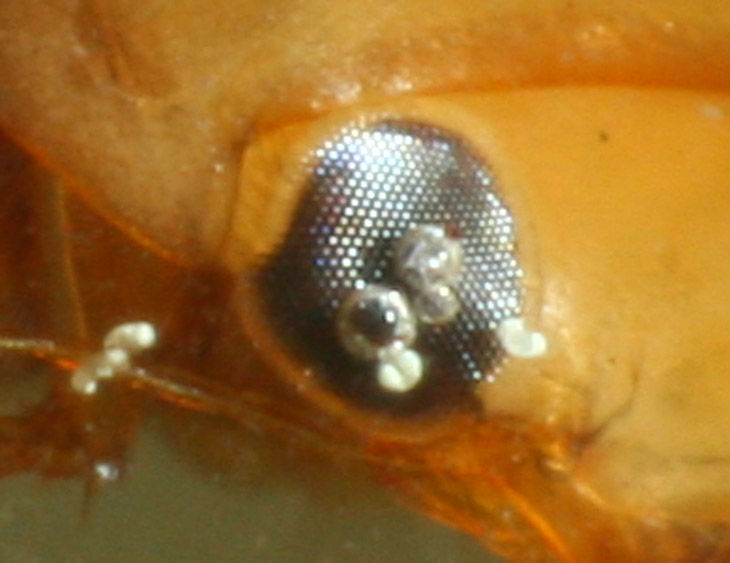Several days back I was trying to do some aquatic photos using the macro tank, and while I was working with the main subject (to be seen later on) I took the opportunity to photograph an aquatic beetle that had come along for the ride. This one was about 3mm in body length, just to give you an idea – nailing sharp focus at that magnification is challenging. Adding further to the difficulties was the sand I was using as a substrate, since it hadn’t been submerged for more than a couple of minutes and too many grains were still floating through the air adhering to them, just to be in the way. Naturally, it’s hard to tell a hyperactive beetle to move a little to the left…

When editing the shots, I tend to go in to full resolution on the images to check for clarity, but this one made me pause. While I actually captured the facets of the compound eyes (no easy feat, this,) they don’t look right, actually seeming to extend beyond the edges of the eyes themselves.

This is a 200% resolution inset, twice the actual resolution of the original image. The most prominent stuff is sand in the way, but I’m referring to the facet reflections at the top of the eye, which not only extend too far, they don’t even curve as you might expect them to. It looks, even to me, like I wasn’t very good at Photoshopping in the texture layer. But here’s what I think is the case.
Compound eyes tend to be sets of tubes all clustered together, with a little lens at the outside surface (top,) and reflective sides leading down to the retina at the bottom. Often the sides are camouflage-colored, but when you get a view straight down into the tube, you see the darkness of the retina and that’s what provides the ‘false pupil‘ effect. But this species, at least at this size, actually has clear-sided tubes that are completely transparent; the darkness is the retina cells themselves, while the eye as we typically see it is larger in diameter. Check the faintly milky outer circle that’s visible, mostly to the top and right a bit. The flash angle was responsible for even showing the upper facets in the first place.
That’s my conjecture, but you are free to disagree if you like – I control this blog and your comments will be deleted anyway. I just thought I’d feature a curious thing that I stumbled across.




















































